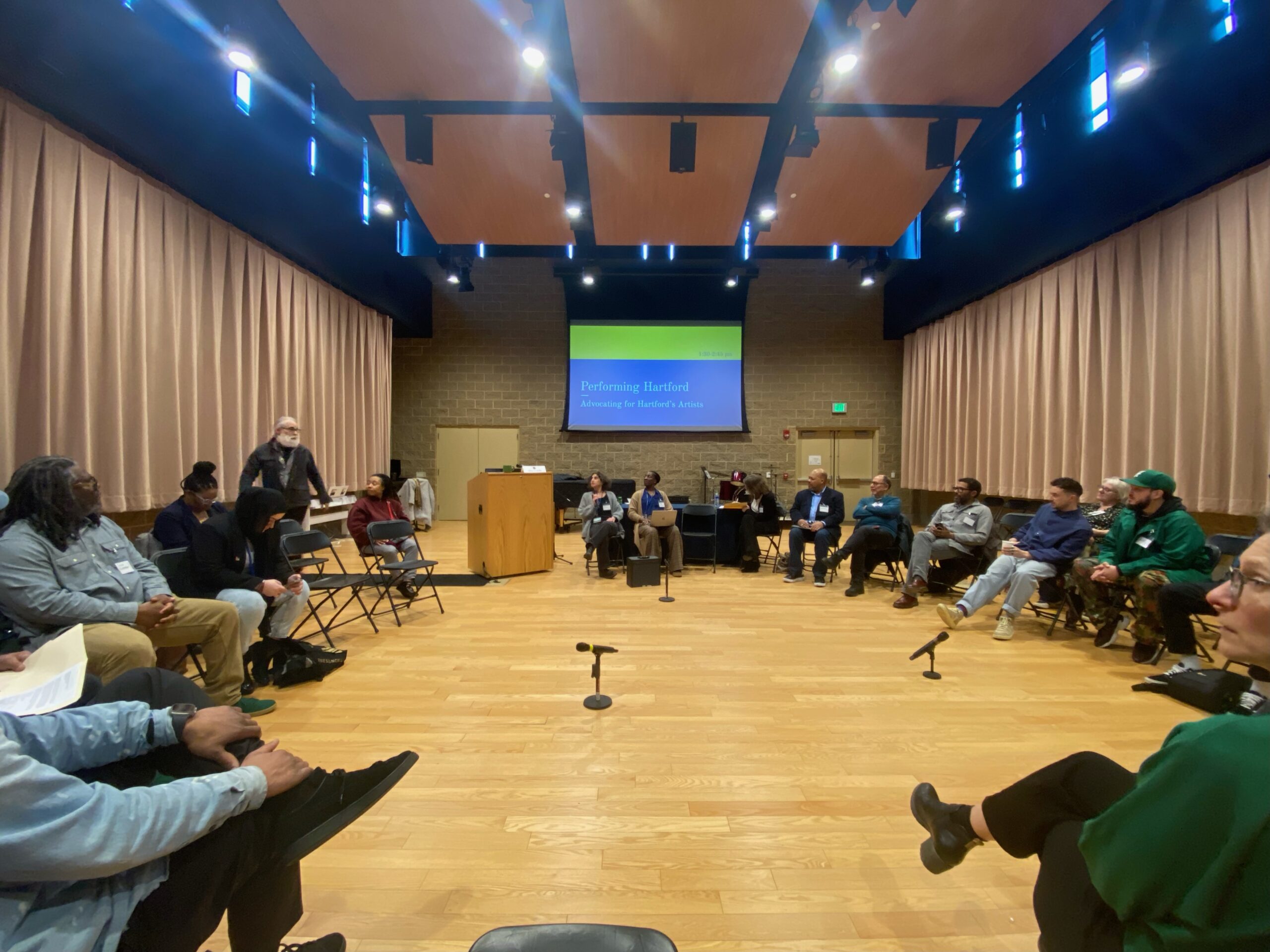As part of Trinity College’s Spring Bicentennial Symposium on February 28th, a two-part Hartford “artists and culture” discussion took place. The first session was a panel discussion that featured Cynthia Rider and Floyd Green – Co-Chairs of Mayor Arulampalam’s Arts and Culture Policy Committee, which has been charged with recommending arts priorities to the mayor’s office. The second session focused on the topic: “Advocating for Hartford Artists.” This session, which was an informal and inclusive dialogue between all attendees, delved into the intricacies of supporting independent artists and cultural bearers who often juggle multiple roles in their quest for creative expression and making a living through their art.

At the core of the discussion, led by Austin Arts Center Director Professor Deborah Goffe and Professor Rebecca Pappas, was a critical examination of how to create an environment in Hartford that not only welcomes artists but truly nourishes their growth and creativity. The discussion used a framework drawn from the 2003 study, “Investing in Creativity” that examined the support structures for the arts in urban and rural towns and cities throughout the U.S. By applying the study’s six major dimensions to Hartford’s arts infrastructure—validation, demand/market, material support, training and professional development, communities and networks, and information—the conversation aimed to dissect what makes a Hartford hospitable for the arts.

The discourse was not just theoretical but very interactive as well. Participants engaged deeply with these dimensions, adding their insights and experiences to enrich the collective understanding. This process underscored the importance of recognizing the value of artists’ work (validation), understanding and expanding the market for their creations (demand/market), and ensuring they have the necessary resources (material support).
Keren Prescott of Hartford Public Library highlighted a significant barrier for artists: the daunting world of grant-writing. She advocated for a shift in perspective, emphasizing that artists should be allowed to focus on their art, rather than conforming to the timelines and parameters of grant applications that serve institutions more than communities, stressing, “Let artists be artists, they are not grant writers.”
Andre Rochester brought attention to the “Artists for Color Accelerate,” which is serving as a bridge-building vehicle of cultural ambassadorship, aiming to dismantle systemic racism in the arts and establish a regional network of artists of color – while building economic capacity. While a commendable initiative, Andre explained that it is often constrained by its singular funding source. This mention sparked discussions on the need for more straightforward, artist-friendly funding avenues. Attendees considered this issue and discussed the sustainability of funding and the imperative to diversify and secure continuous support for artists.
The conversation also touched on critical areas of training and professional development, which currently tend to be corporate and white-centric. The symposium attendees pondered on how these could be reimagined to better serve the diverse needs and identities of artists.
Concerned that conversations would not lead to action, one of the artists poignantly asked, Will the necessary resources be gathered and allocated to meet artists’ needs? Discussions like the “Advocating for Hartford Artists” session demonstrate that, while we must hold institutions accountable, there must be continued collective effort on the part of artists to ensure they receive the support they rightfully deserve.

One way that Trinity College is bridging relationships between Hartford and the student body is through the Community Action Gateway first-year courses. These courses include community-based research and social change projects. Currently, Oyu Sainsur ‘27 and Saanvi Bajaj ‘27 are engaged in a project with FREEHARTCloset, a project of Mutual Aid Hartford. They are conducting a needs and assets assessment with Hartford artists to inform the development of a free Library of Things in Hartford to provide access to art supplies, hardware, and more. The feedback the students receive from interviews and focus groups with artists will be used to create a digital asset map. They are currently accepting participants for the project.
The “Advocating for Hartford Artists” session at Trinity College’s Spring Bicentennial Symposium was more than a discussion; it was a catalyst for change. Trinity College is initiating that change by providing the much-needed space for these conversations to take place. By bringing to light the multifaceted needs of artists and the systemic barriers they face, the session laid the groundwork for a more inclusive and supportive arts ecosystem in Hartford that participants in the discussion hope can be utilized in the policies set forth by the new mayor’s office.
As the conversation continues to ripple through the community, it’s evident that the path forward requires collaboration, innovation, and a steadfast commitment to reimagining support structures for artists. Only then can Hartford truly become a haven for artists, where creativity flourishes, and culture thrives.
